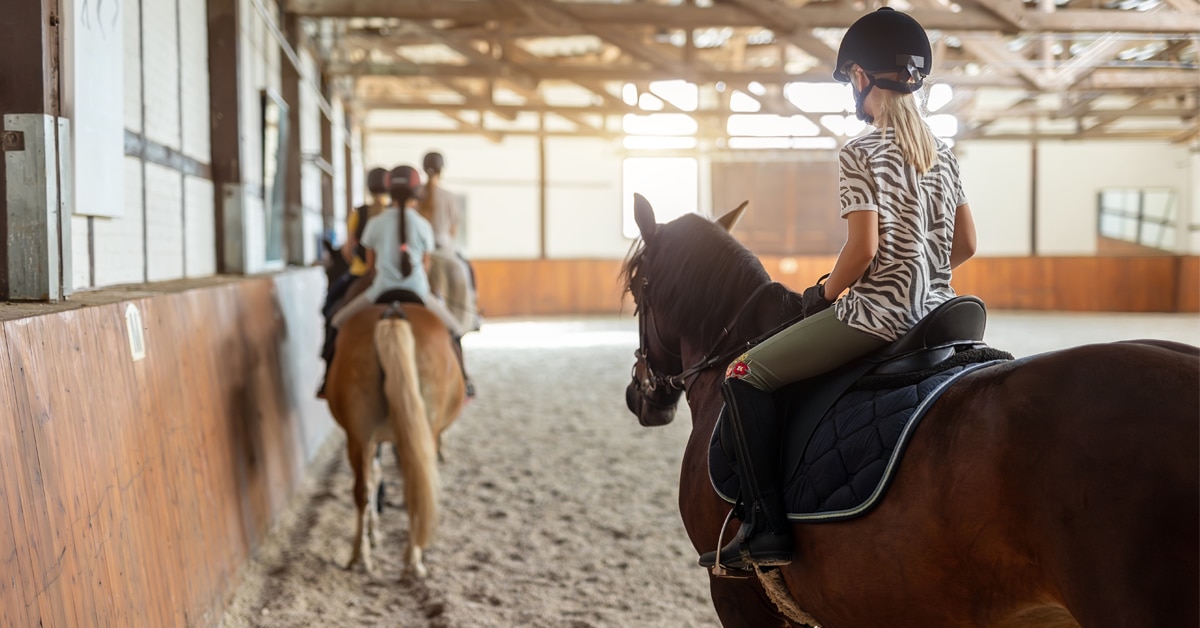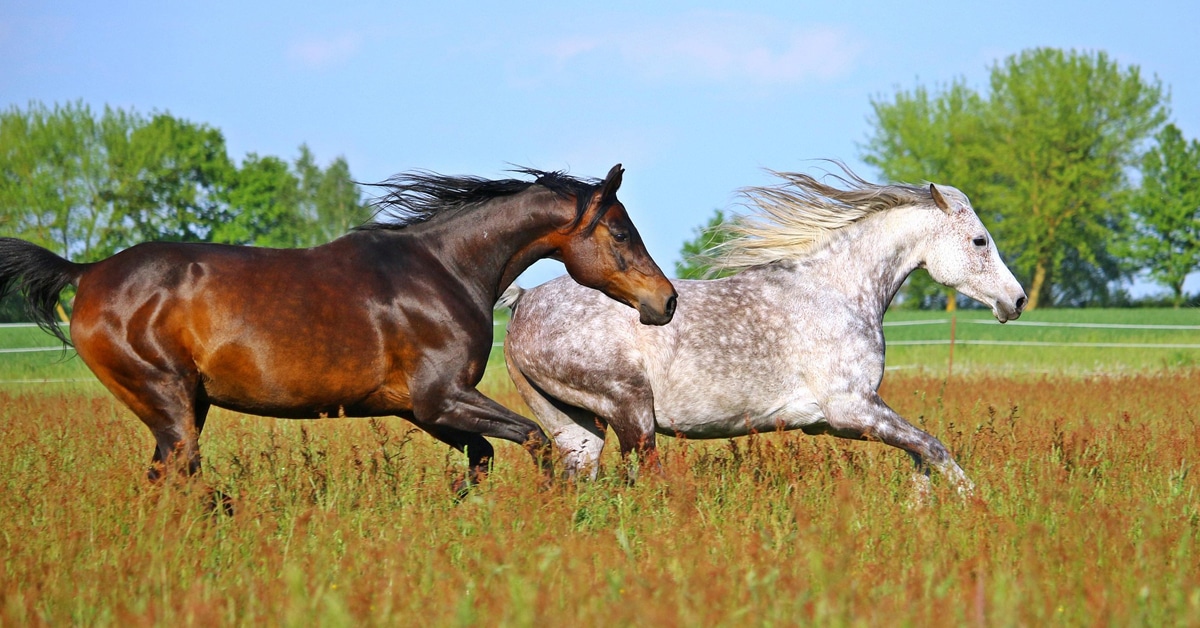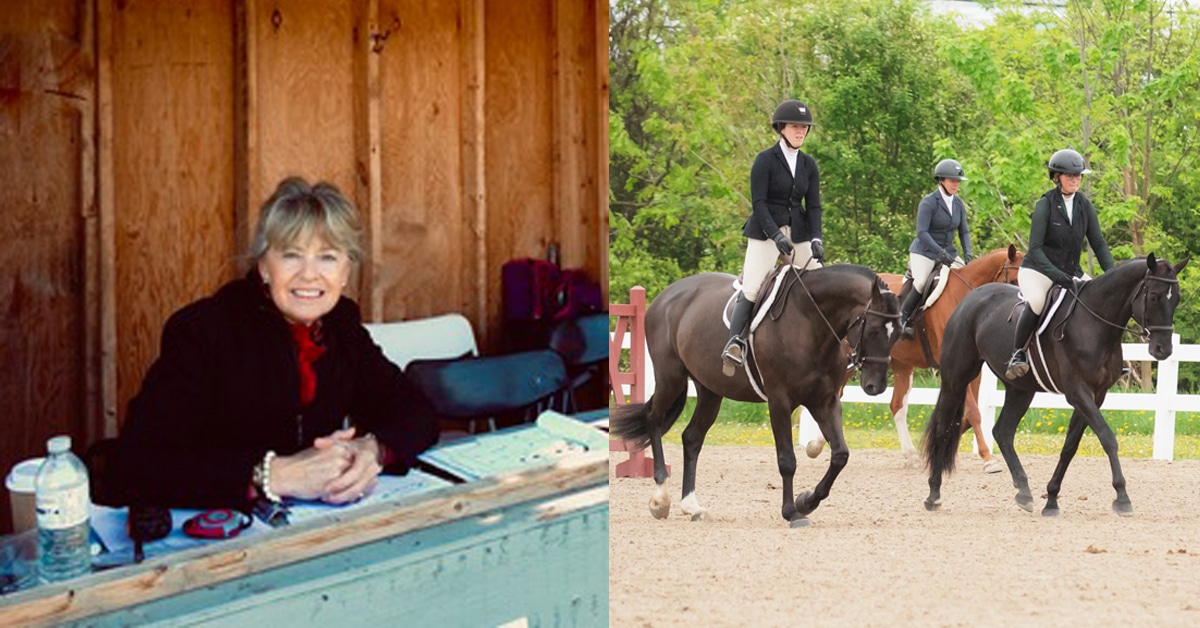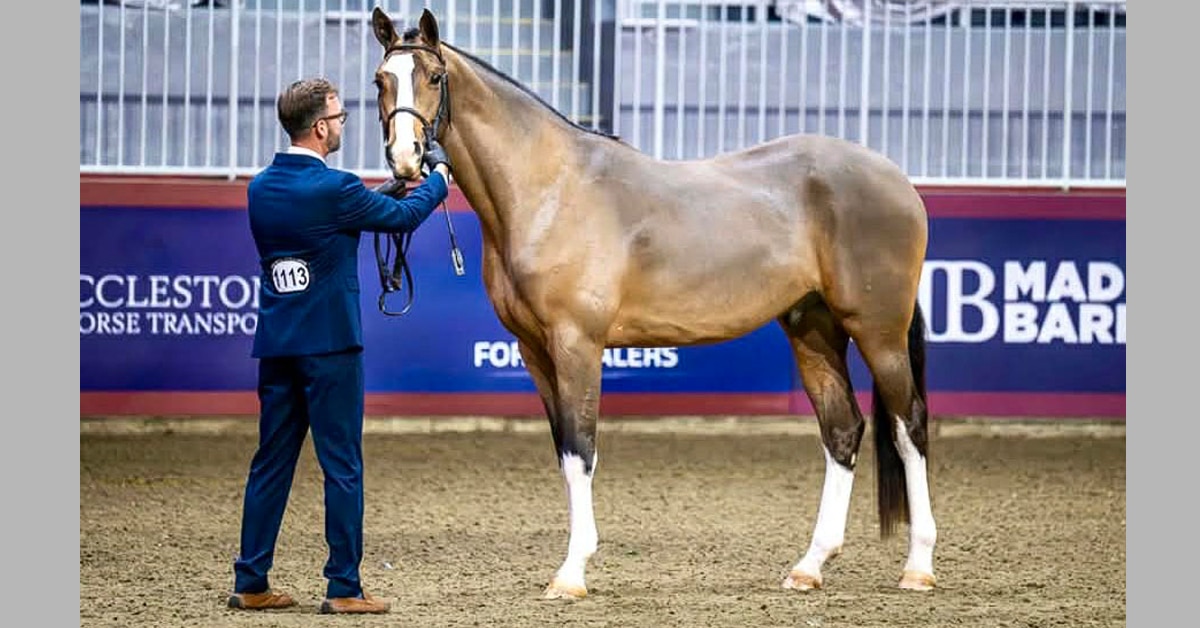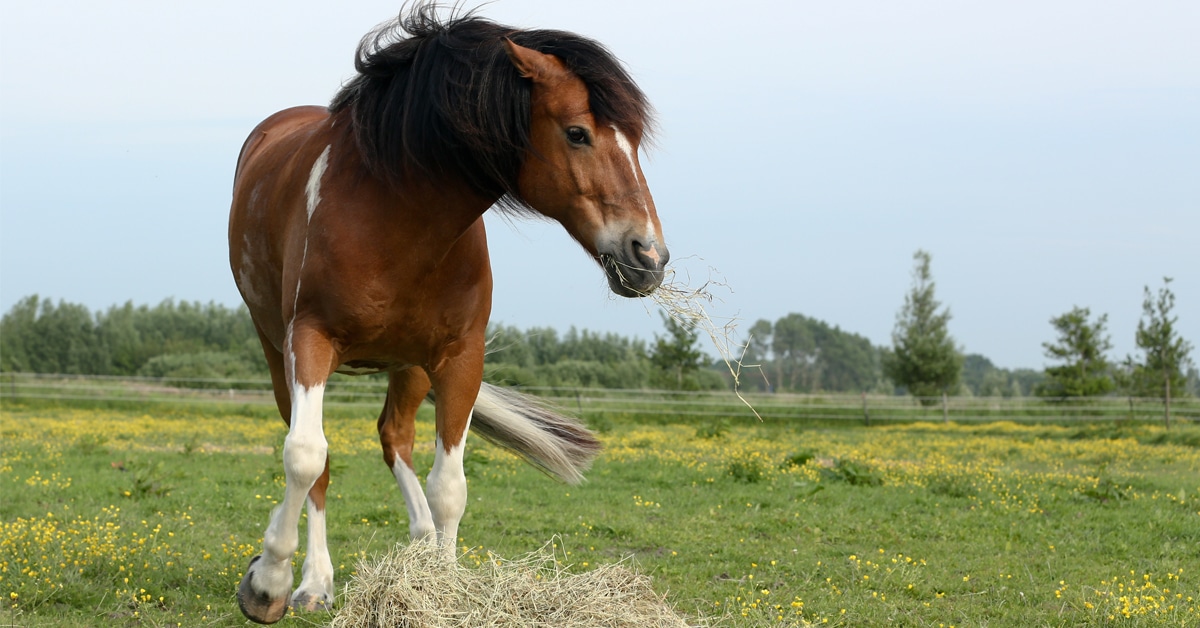Since establishing Mill Creek Stables in Cambridge, ON, in the mid-’90s, Phil Henning has sourced, owned and bred an impressive stable of show jumping talent who bore the Mill Creek prefix, including Raphael, Rosalinde, Sweet Dream, Chardo, Sparky, Eli, Marco Taere and Stevie Wonder. Recently welcoming Yann Candele and his Normandy Hills training business to Mill Creek, Henning – with the help of some discerning eyes in Europe, including his daughter, Tonya – is in the process of restocking his stable with some promising youngsters. He explains the characteristics he looks for in a future grand prix champion.
Where to look
“You can find a good horse anywhere,” says Henning, “but you have to look everywhere. We’re looking for some horses right now – Eric [Lamaze] and Yann [Candele] are both in Europe looking. Tonya is looking, Eric has his people looking. It’s not so easy to find good horses. You’ve got to cover a lot of miles.”
Breeding operations, inspections, horse shows, reputable sales agents and even private farms can and should be scoured for prospects. While he has had some luck at the big Hanoverian auctions, Henning tends to avoid auctions in general. “I find a lot of times they get ridden pretty hard at the auctions – they get tried a lot.” Do your homework to track down youngsters of the type and bloodlines (and price range) you are looking for. Ask around; sometimes word of mouth can help you find a prospect before it even hits the auction block.
Henning suggests that keeping an open mind will deepen the pool of prospects; for instance, don’t limit yourself to buying only unbroken young stock, or only horses that are backed and with some show experience. “We’ll buy anything. I have a really great girl at the farm, Kirstin Wright, and she’s so good with the young ones, she backs them and does a great job.”
Breed vs. Breeding
You should never venture into this undertaking with a do-or-die specific breed in mind. Explains Henning, “Hanoverian, Oldenburg – it’s all so mixed up now – all the stallions are pretty much cross-approved, and it’s fairly easy to get a quality mare cross-approved, so the breed doesn’t really matter. We’re just looking for good horses. It’s not like ‘I have to have a Hanoverian.’ It’s more important with a stallion, but not so much with a mare or gelding.”
He stresses the importance of dam lines, however, something that North Americans tend to ignore. “Europeans are very good at knowing the mother lines; here we’re always thinking about the stallions. The mother’s line is way more important than the stallion’s.”
Age range
Henning points out that when you’re talking about ‘young’ horses, there is quite a range of ages in different people’s minds – from foals on up. “A guy like Eric Lamaze is not going to be riding four-year-olds; he just doesn’t have the time to do that. Yann is the same – he needs horses that are six, seven, eight years old that he is bringing up to a higher level. Right now we’re looking for seven, eight, nine-year-olds – horses that are ready to go. Usually once a year I’ll buy one young one [under six], if I see a nice one.”
Henning found “a nice one” last year, and broke one of his own rules in the process. “I bought a really nice foal at the Oldenburg mare and foal inspection held at our farm. Normally I don’t ever buy foals, but I had to buy him, he was so beautiful. Very nice, nice mover, looks very athletic – you never know how they’re really going to be, but hopefully he will turn out to be something.” He admits that purchasing a foal is “like buying a lottery ticket,” although “some mother’s lines tend to produce really good foals.” Once again, if you want to gamble on a foal, exhaustive research comes into play to determine which breeding lines have typically produced winners.
Conformation
The weight of importance put on conformation is directly related to the age of the animal in question. “When they’re very young, any sort of conformation faults or crookedness means you’re going to reject them, because you have to put so much time into them,” says Henning. “Why would you start with something you see an obvious problem with?” However, some small flaws can be forgiven if the horse has lived with them and is successful in spite of them. “When horses get older – they’re seven or eight years old and they’ve been competing, they may not be perfect [conformation-wise], but it’s never bothered them. They have a steady record and they’re showing regularly. If the horse is good, it’s good.”
The most perfectly put-together horse may not necessarily be the soundest one, either. “Sometimes you see a horse that has an issue, and they never have a problem. Then there’s the horse that’s perfect on the x-ray, and they’re nothing but problems! It’s funny how it works – one with an obvious problem goes on forever, and the one that you can’t see anything, they break down. It’s crazy.”
Size does matter when it comes to jumpers. “We’re usually looking at horses that we are going to resell, so we’re looking for horses that will finish 16.2 or larger,” says Henning. That does not mean that he would discount a jumper if it was a little on the small size. “Sometimes these little horses have a big stride and a big jump and it works.” At the other end of the spectrum, “They can be too large.” An 18-hand behemoth may just not be as handy and agile as one a hand shorter.
In the end, Henning says, “I just want to buy the best one” – so the fewer potential problems, the better.
Something in the way he moves
“What I look for in a jumper is something that looks athletic – moves well, gets his legs underneath him, elastic in the back and body, flexibility. That’s what will catch my eye,” explains Henning. “At the end of the day, they’ve got to jump. I’ve seen some horses that you wouldn’t even take a second look at, though, and they’re superstars!”
He points to Cagney, the Irish-bred gelding ridden with tremendous success by Eric Lamaze in the ‘90s, as an example of a horse with unorthodox form. “He didn’t jump correctly – but he just did it. He was an amazing horse.” Another example of a horse who initially slipped under the radar only to become an Olympic gold medal winner was Hickstead: “Lots of people passed on Hickstead.”
Henning does not see free jumping as the ultimate method of determining jumping ability, either. “Sometimes you see these horses jumping like freaks, and you never know what people have done with them. I like to free-jump my own, because I know exactly what they’ve done before.” Free jumping does have one basic use: “You can see if the horse can or can’t jump, and has good technique, but that often changes when a rider gets up.”
He added, “I had lunch with François Mathy the other day and he said, ‘You know, the real truth – when you know what you’ve really got – is when you go in the ring.’ The bottom line is you can think anything you want. Especially when you breed horses and raise them, you get attached to them. You want them to be the best – and may believe they are better than they really are sometimes. The fact is, they have to go in the ring and prove it.”
Temperament
“Because we sell and lease horses, we tend to look for horses that are easy and kind,” says Henning. “We’re not generally selling to people like Eric Lamaze or a professional; we’re selling to amateurs. I don’t like nasty horses myself, so why would I buy one?” Historically, there have been lots of top jumpers who were, to put it kindly, a bit feisty. “There are a lot of great jumpers that are nice, too, so I’ll take the nice ones!”
Price range
What you can expect to pay for a youngster who looks like he has the makings of a top jumper relies on many factors and can fluctuate greatly. Henning warns, “It depends on who the customer is, and what level you’re playing at. And once again, what’s the mother done?” At the recent Hanoverian Spring Elite Auction in Verden, Germany, for example, the average price for a three- to six-year-old sport horse was 22,900 euro, while foals sold on average for 6,750 euro. The top seller was the five-year-old stallion, Fritz, who brought 92,000 euro. Interestingly, the top show jumping horse was the four-year-old mare Penelope PJ (by Perigueux x Calypso II), who had won the Verden Jumping in Freedom championship and was sold for 47,000 euro to an undisclosed buyer in Canada.
And not all of the cost will be the sticker price, either. Where the horse is located can boost the price enormously. Henning points out that the $11,000 he paid for his foal was “probably high-end for a foal, but it’s already in Canada so I don’t have to ship it. You have to take those things into consideration, because it’s not cheap shipping horses across the pond – you can spend $10,000 just doing that.” Travelling to the hotbeds of horse talent in Europe is not for the financially faint of heart. “The way I travel with a little entourage with me, it can cost $20-$30,000 just to go look at a horse!” Henning says, laughing.
In a perfect world
There is a formula for success for developing young horses that the Europeans have long recognized and applied. “With horses, you almost need three different organizations,” explains Henning. “The breeder who breeds them and sells them as young horses to another group of people who just start young horses and get them going and take them to shows. Then once they have a little bit of experience, they’re five, six, seven years old, then they go to a different group that takes them the rest of the way.
“We’re missing that a little bit in North America – it’s very hard to breed a lot of horses here and develop them, because we don’t have that system. Not everybody can go and ride in a grand prix over there [Europe]. Here, a guy buys a five-year-old and he thinks he’s a grand prix rider and he pays his $1,000. He’s found something he thinks he can jump around and he’s in the ring.”
So of all the horses who have graced the stables at Mill Creek, which was Henning’s favourite? “I had a horse called Skorpio that Tonya rode, and then we leased him out for equitation for years and years. I really liked that horse; I used to ride him myself. He came from Paul Schockemöhle through Augustin Walch.
“Raphael had to be the best horse, though – he won so much with Eric and went to the Sydney Olympics, so I’d have to say he was the best horse we ever had.”
But with the current flurry of horse hunting to build up a new string of talent, Henning may want to append “… so far” to that statement.
The Latest

